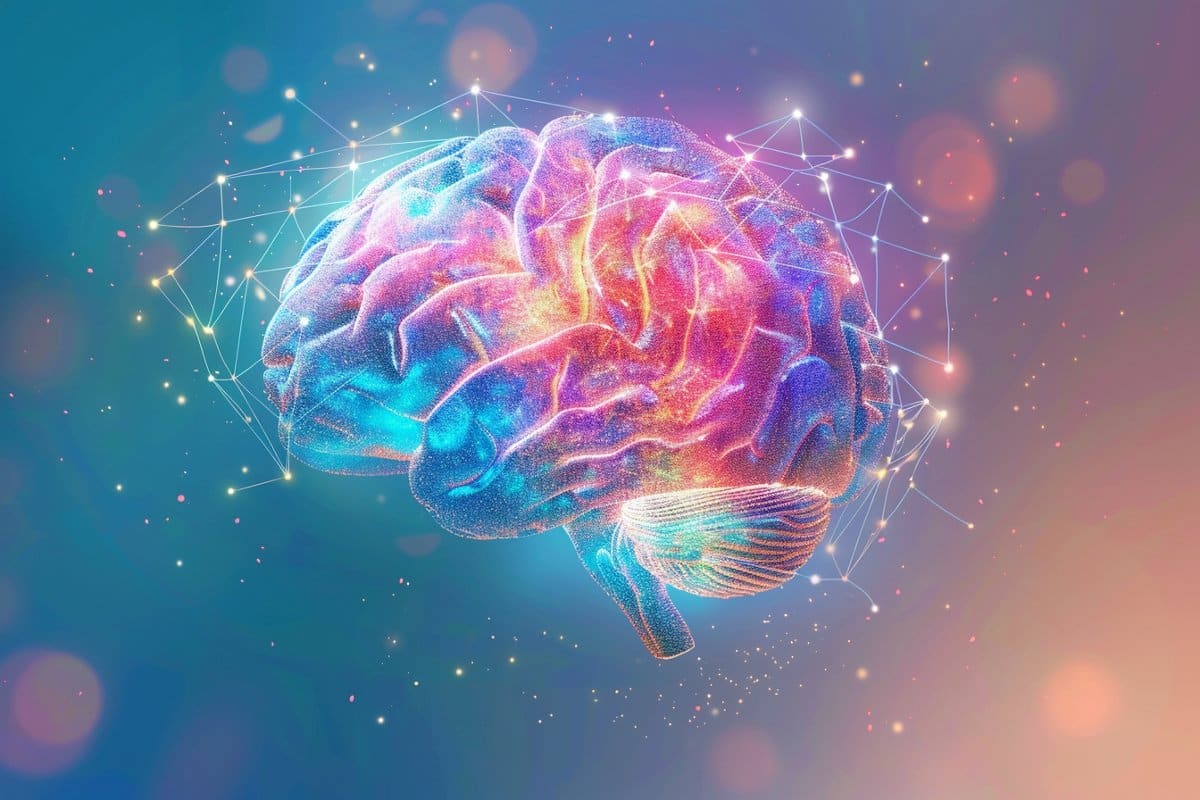Summary: A new study provides a novel understanding how the human brain regulates emotions, distinguishing between emotion generation and regulation. By analyzing fMRI studies, researchers identified specific brain regions, including areas of the anterior prefrontal cortex, that are key to emotion regulation.
These findings could improve mental health treatments by targeting these brain areas for therapy or stimulation. The study also explores the interaction between neurotransmitters and emotion regulation, suggesting potential implications for pharmaceutical treatments.
Key Facts:
- The study differentiates between brain activity related to generating emotions and regulating them, highlighting the anterior prefrontal cortex’s role in regulation.
- It suggests that enhanced activation of specific brain regions during emotion regulation is linked to resilience against negative experiences.
- The research indicates that neurotransmitters such as cannabinoids, opioids, and serotonin play significant roles in emotion regulation, which could influence therapeutic approaches.
Source: Dartmouth College
Ever want to scream during a particularly bad day, but then manage not to?
Thank the human brain and how it regulates emotions, which can be critical for navigating everyday life. As we perceive events unfolding around us, the ability to be flexible and reframe a situation impacts not only how we feel, but also our behavior and decision-making.
In fact, some of the problems associated with mental health relate to individuals’ inability to be flexible, such as when persistent negative thoughts make it hard to perceive a situation differently.
To help address such issues, a new Dartmouth-led study is among the first of its kind to separate activity relating to emotion generation from emotion regulation in the human brain.
The findings are published in Nature Neuroscience.
“As a former biomedical engineer, it was exciting to identify some brain regions that are purely unique to regulating emotions,” says lead author Ke Bo, a postdoctoral researcher in the Cognitive and Affective Neuroscience Lab (CANlab) at Dartmouth.
“Our results provide new insight into how emotion regulation works by identifying targets which could have clinical applications.”
For example, the systems the researchers identified could be good targets for brain stimulation to enhance the regulation of emotion.
Using computational methods, the researchers examined two independent datasets of fMRI studies obtained earlier by co-author Peter Gianaros at the University of Pittsburgh.
Participants’ brain activity was recorded in an fMRI scanner as they viewed images that were likely to draw a negative reaction such as a bloody scene or scary- looking animals.
The participants were then asked to recontextualize the stimulus by generating new kinds of thoughts about an image to make it less aversive, before a neutral image was presented followed by another dislikable image.
By examining the neural activity, researchers could identify the brain areas that are more active when emotions are regulated versus when emotions are generated.
The new study reveals that emotion regulation, also known in neuroscience as “reappraisal,” involves particular areas of the anterior prefrontal cortex and other higher-level cortical hierarchies whose role in emotion regulation had not previously been isolated with this level of precision.
These regions are involved in other high-level cognitive functions and are important for abstract thought and long-term representations of the future.
The more people are able to activate these emotion regulation-selective brain regions, the more resilient they are to experiencing something negative without letting it affect them personally.
These findings build on other research linking these areas to better mental health and the ability to resist temptations and avoid drug addiction.
The results also demonstrated that the amygdala, which is known as the threat-related brain region responsible for negative emotion and has long been considered an ancient subcortical threat center, responds to aversive experiences the same way, whether people are using their thoughts to self-regulate down-regulate negative emotion or not.
“It’s really the cortex that is responsible for generating people’s emotional responses, by changing the way we see and attach meaning to events in our environments,” says Bo.
The researchers were also interested in identifying the neurochemicals that interact with emotion regulation systems. Neurotransmitters like dopamine and serotonin shape how networks of neurons communicate and are targets for both illicit drugs and therapeutic treatments alike. Some neurotransmitters may be important for enabling the ability to self-regulate or “down-regulate.”
The team compared the emotion regulation brain maps from the two datasets to neurotransmitter binding maps from 36 other studies. The systems involved in regulating negative emotion overlapped with particular neurotransmitter systems.
“Our results showed that receptors for cannabinoids, opioids, and serotonin, including 5H2A, were especially rich in areas that are involved in emotion regulation,” says senior author Tor Wager, the Diana L. Taylor Distinguished Professor in Neuroscience and director of the Dartmouth Brain Imaging Center at Dartmouth.
“When drugs that bind to these receptors are taken, they are preferentially affecting the emotion regulation system, which raises questions about their potential for long-term effects on our capacity to self-regulate.”
Serotonin is well-known for its role in depression, as the most widely used antidepressant drugs inhibit its reuptake in synapses, which transmit signals from one neuron to another.
5H2A is the serotonin receptor most strongly affected by another exciting new type of treatment for mental health – psychedelic drugs.
The study’s findings suggest that the effects of drugs on depression and other mental health disorders may work in part by altering how we think about life events and our ability to self-regulate. This may help explain why drugs, particularly psychedelics, are likely to be ineffective without the right kind of psychological support.
The study could help improve therapeutic approaches by increasing our understanding of why and how psychological and pharmaceutical approaches need to be combined into integrated treatments.
“It’s important to consider these types of connections that come from basic science,” says Wager. “Understanding drug effects requires understanding the brain systems involved and what they’re doing at a cognitive level.”
About this emotion and neuroscience research news
Author: Amy Olson
Source: Dartmouth College
Contact: Amy Olson – Dartmouth College
Image: The image is credited to Neuroscience News
Original Research: Closed access.
“A systems identification approach using Bayes factors to deconstruct the brain bases of emotion regulation” by Tor Wager et al. Nature Neuroscience
Abstract
A systems identification approach using Bayes factors to deconstruct the brain bases of emotion regulation
Cognitive reappraisal is fundamental to cognitive therapies and everyday emotion regulation.
Analyses using Bayes factors and an axiomatic systems identification approach identified four reappraisal-related components encompassing distributed neural activity patterns across two independent functional magnetic resonance imaging (fMRI) studies (n = 182 and n = 176): (1) an anterior prefrontal system selectively involved in cognitive reappraisal; (2) a fronto-parietal-insular system engaged by both reappraisal and emotion generation, demonstrating a general role in appraisal; (3) a largely subcortical system activated during negative emotion generation but unaffected by reappraisal, including amygdala, hypothalamus and periaqueductal gray; and (4) a posterior cortical system of negative emotion-related regions downregulated by reappraisal.
These systems covaried with individual differences in reappraisal success and were differentially related to neurotransmitter binding maps, implicating cannabinoid and serotonin systems in reappraisal.
These findings challenge ‘limbic’-centric models of reappraisal and provide new systems-level targets for assessing and enhancing emotion regulation.








